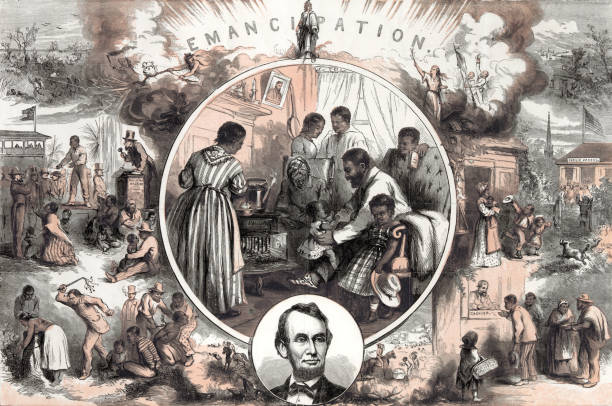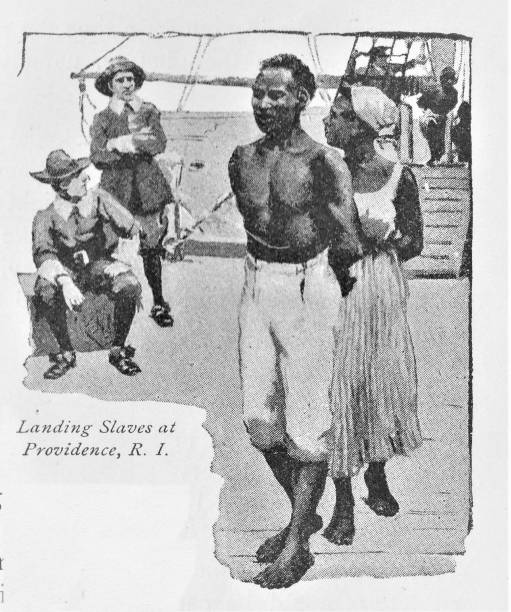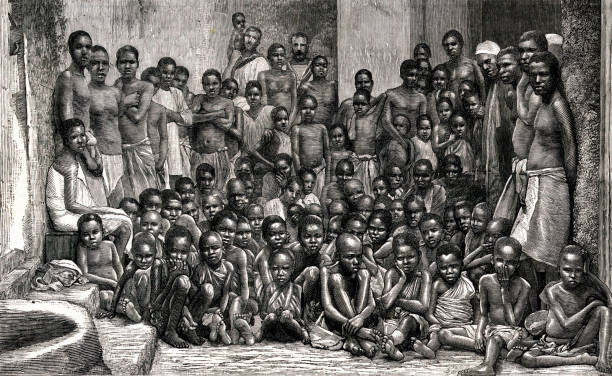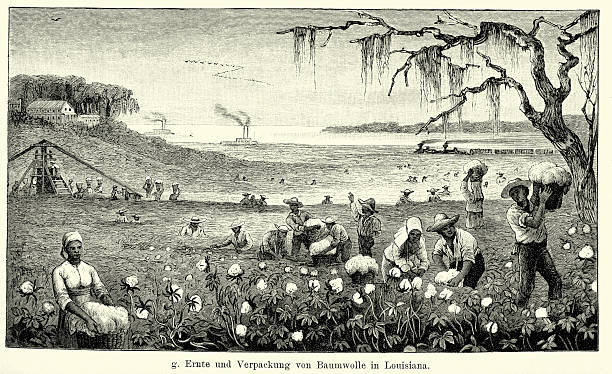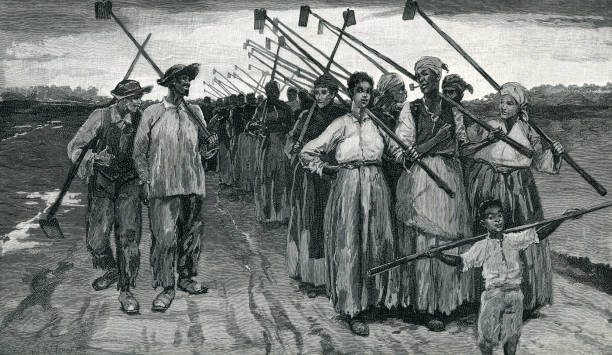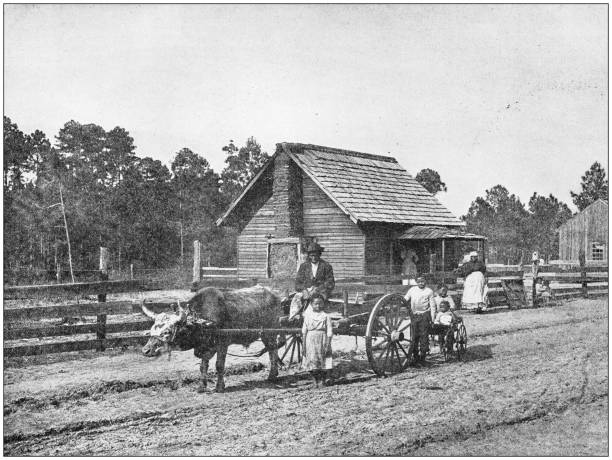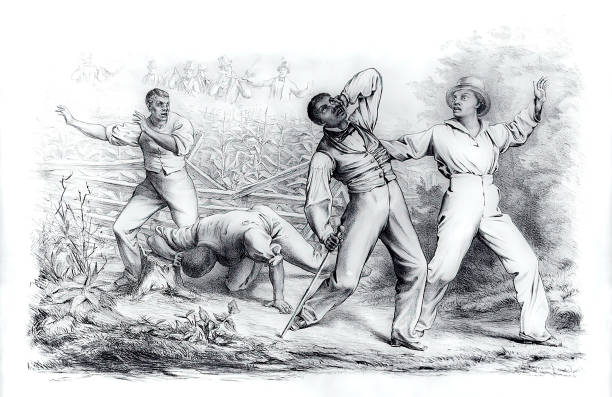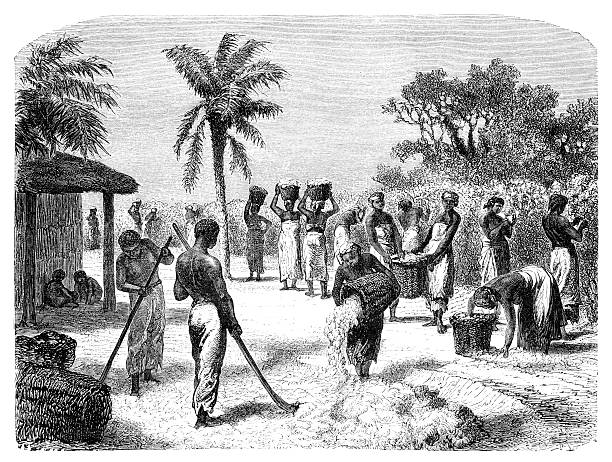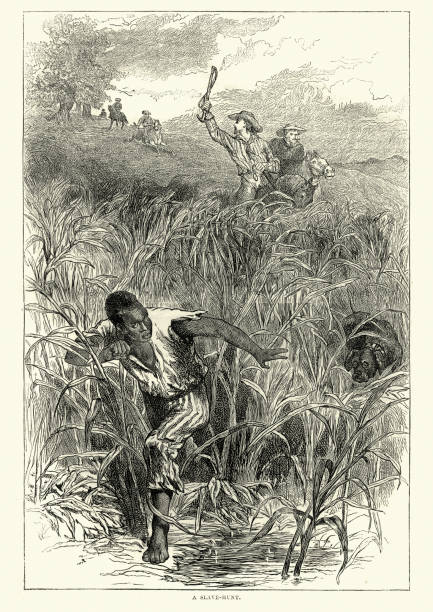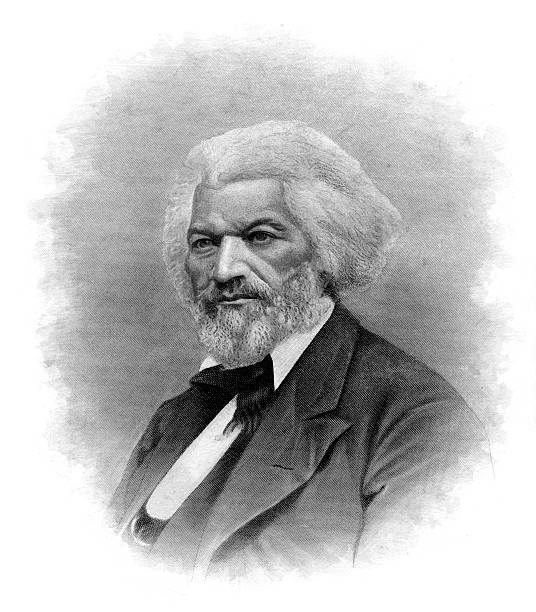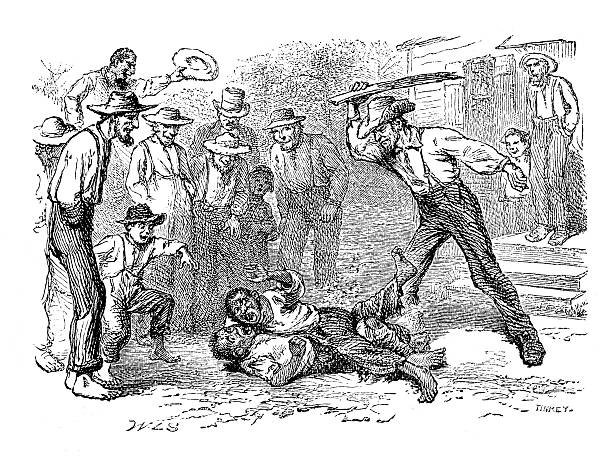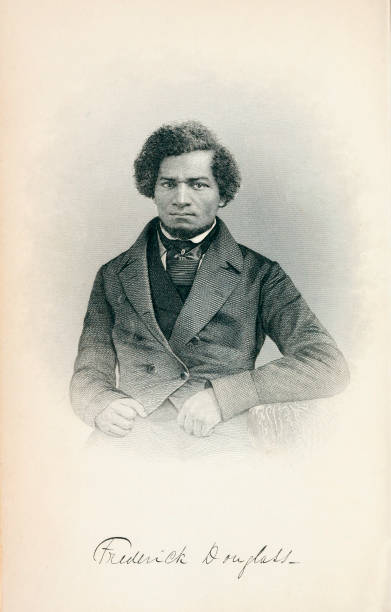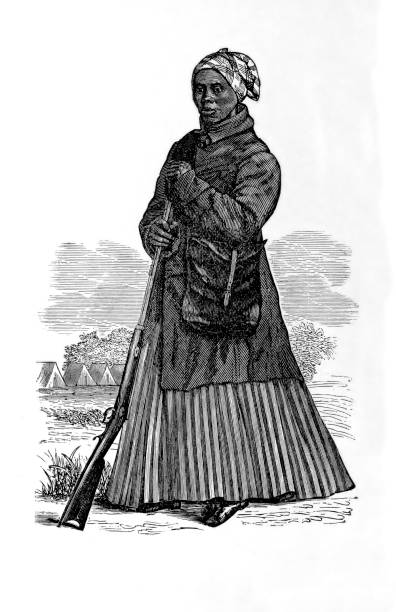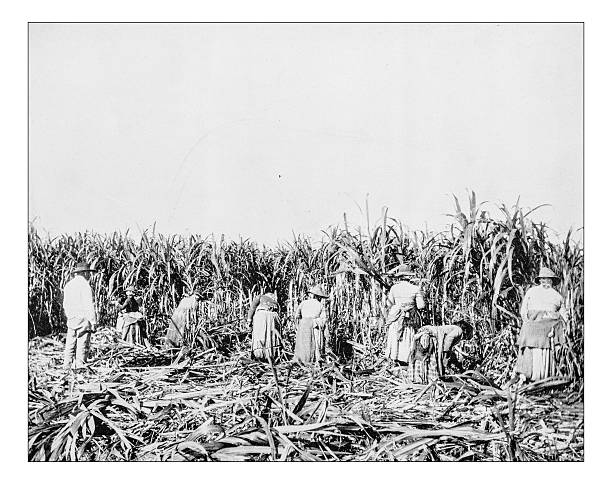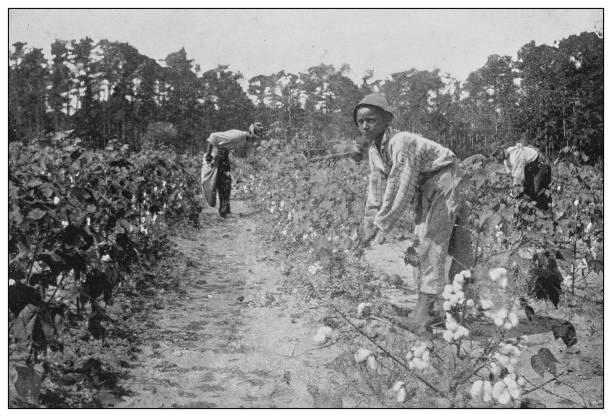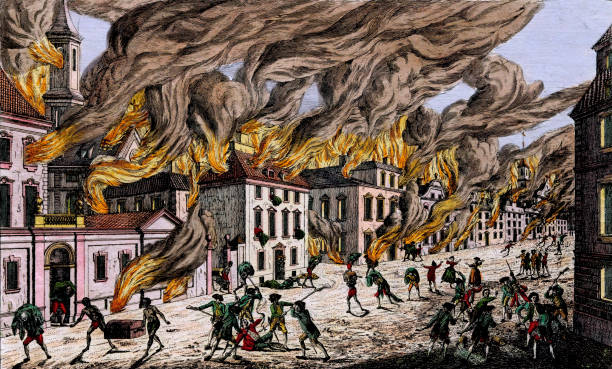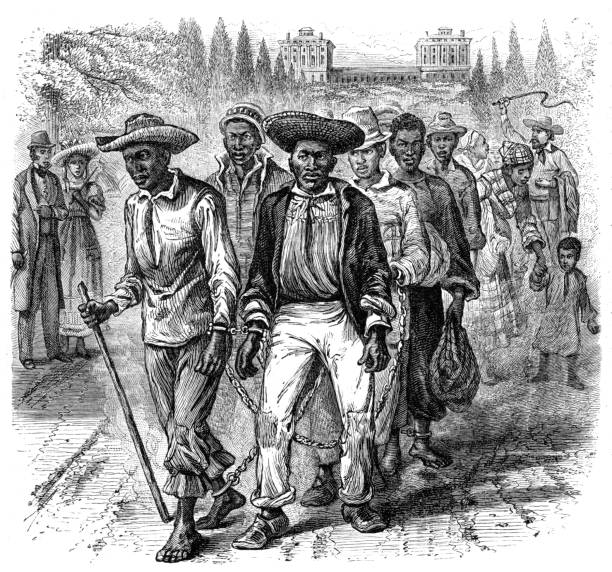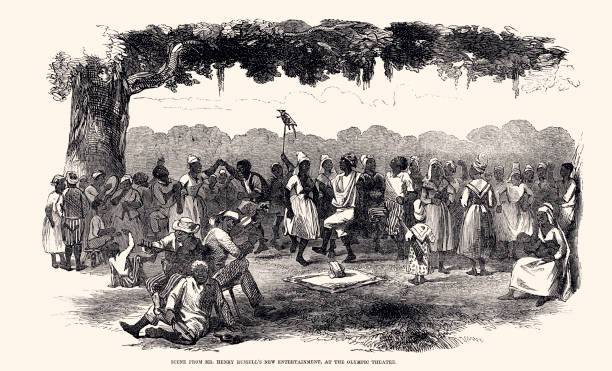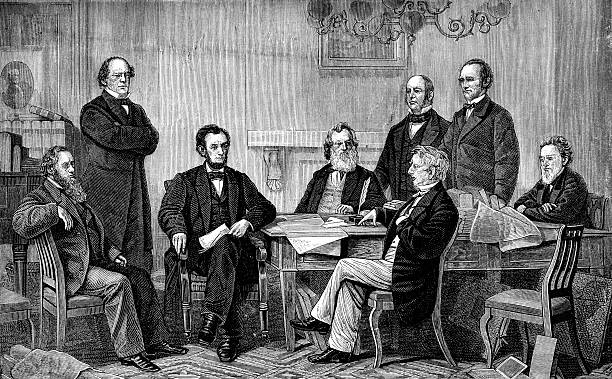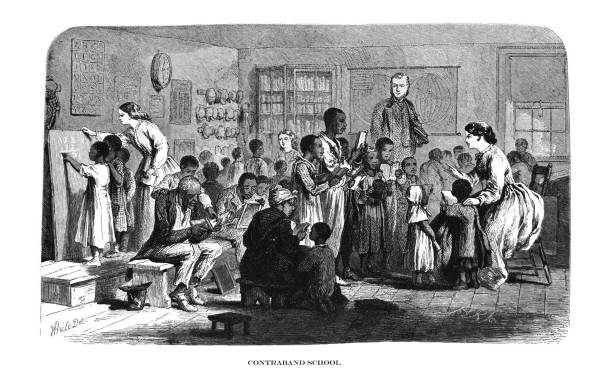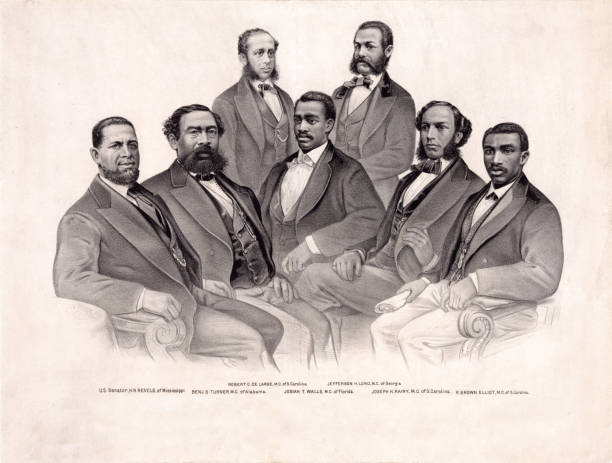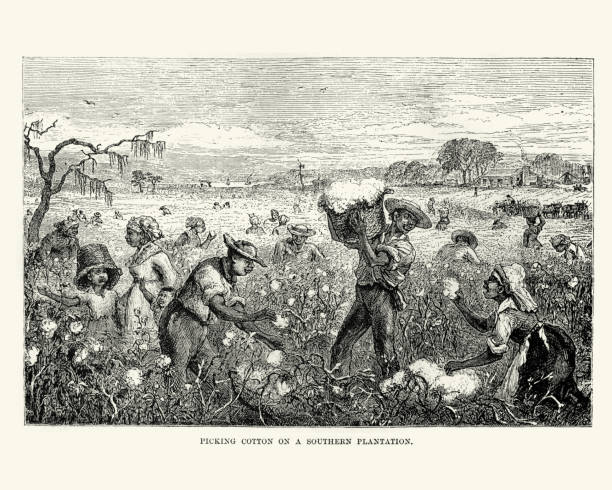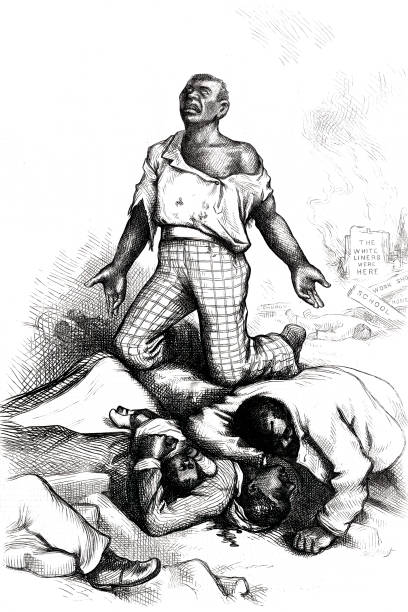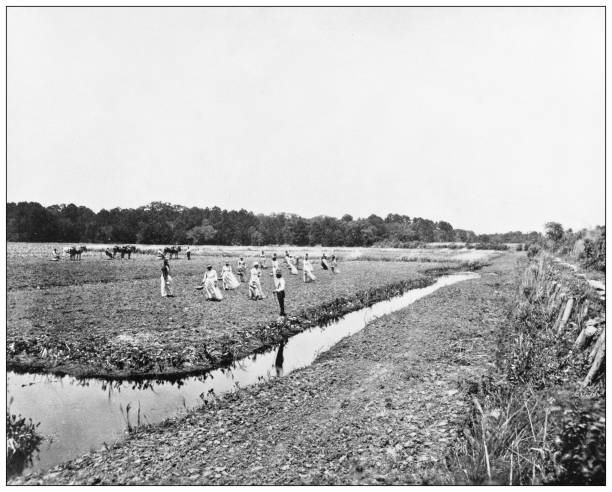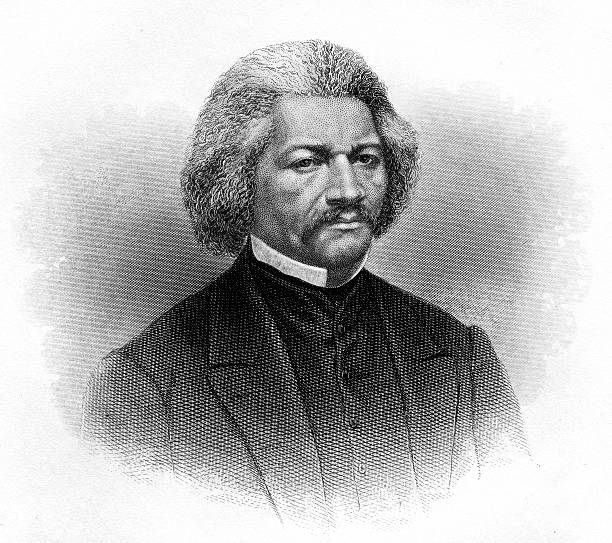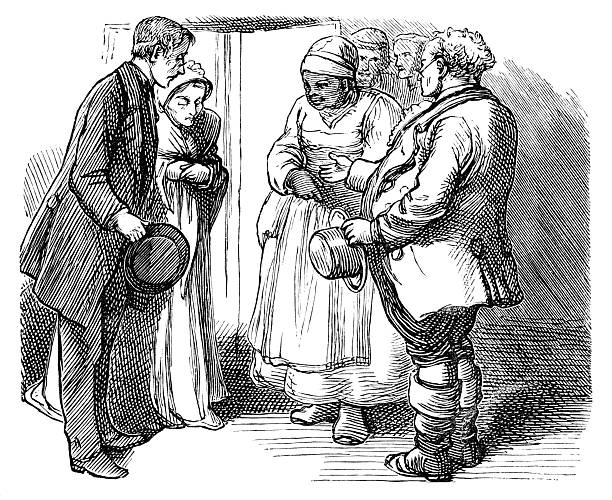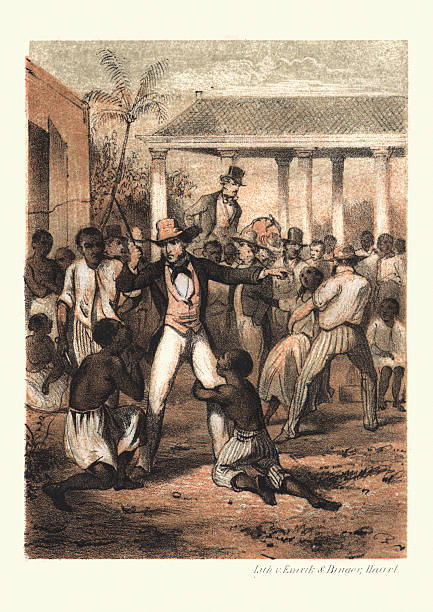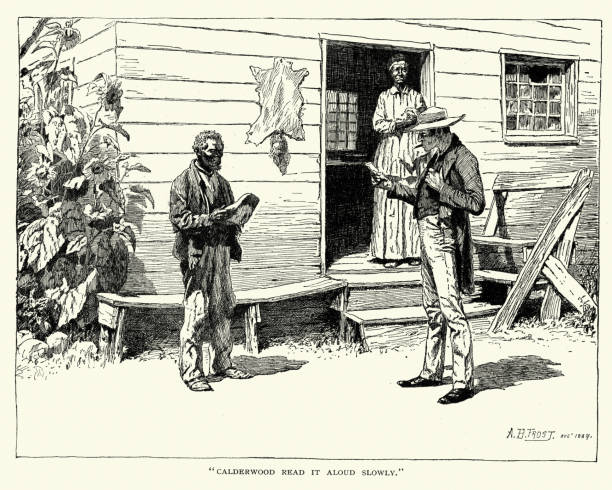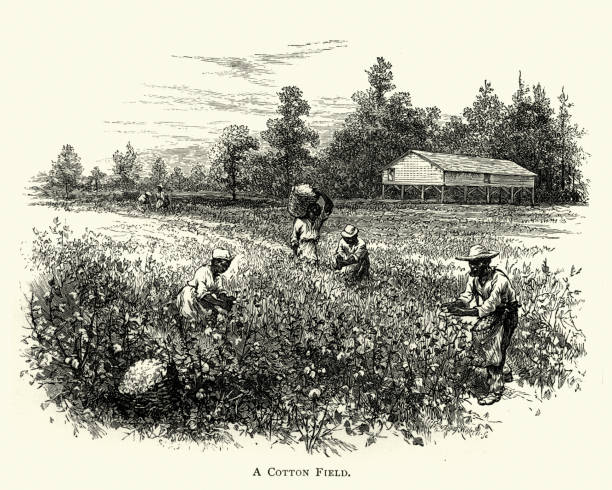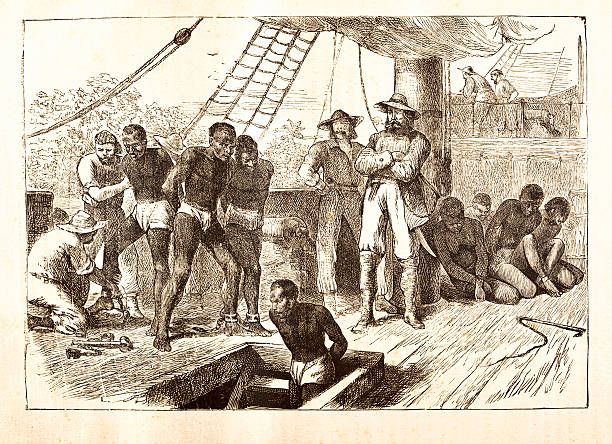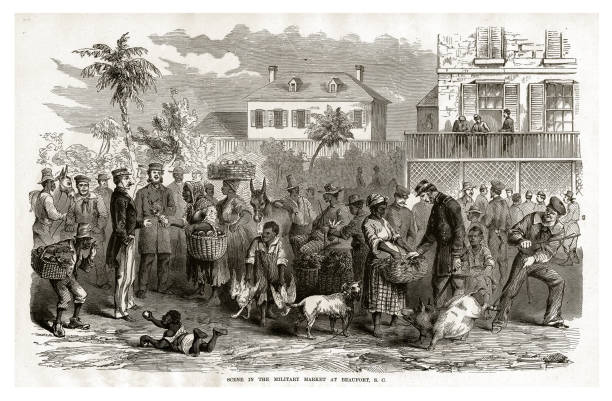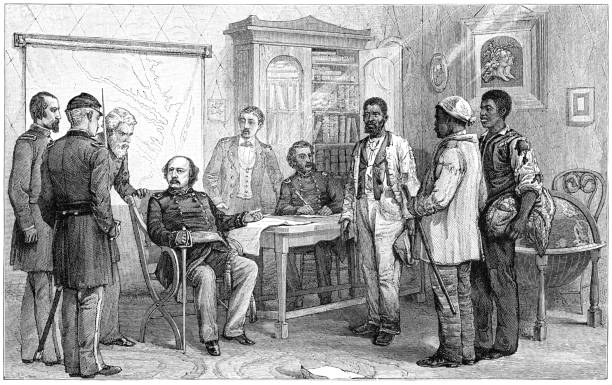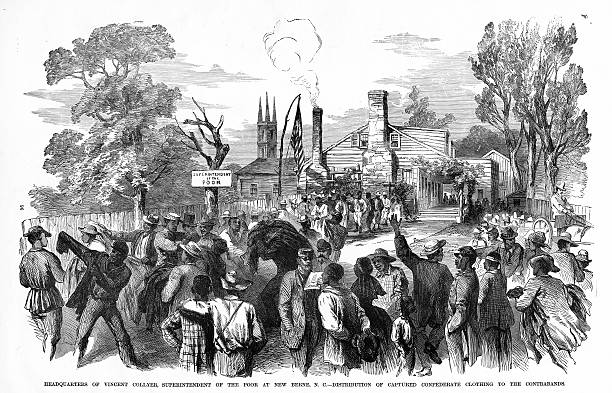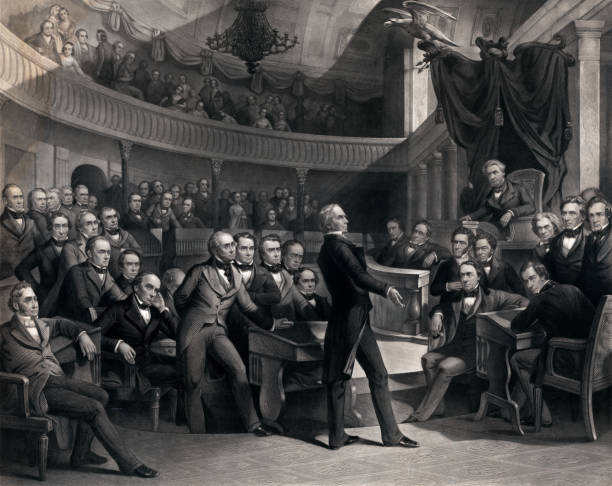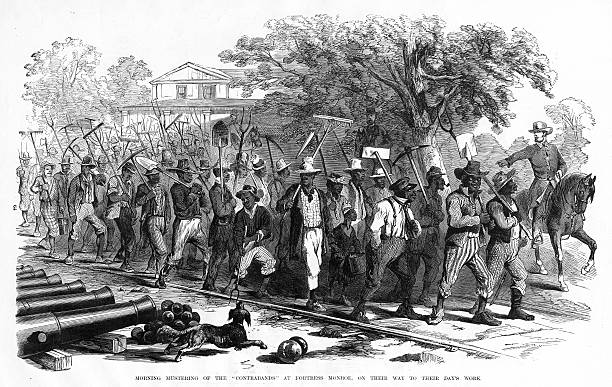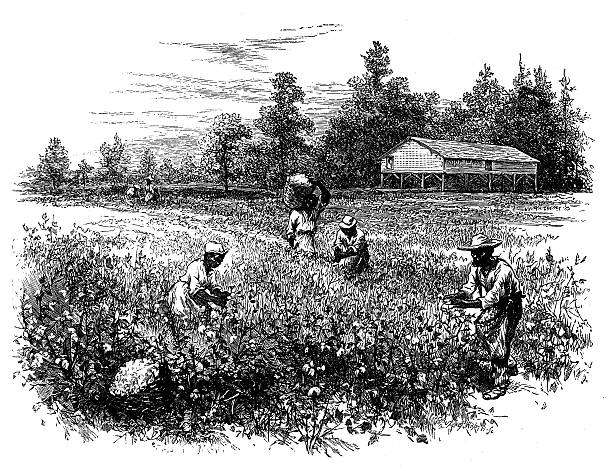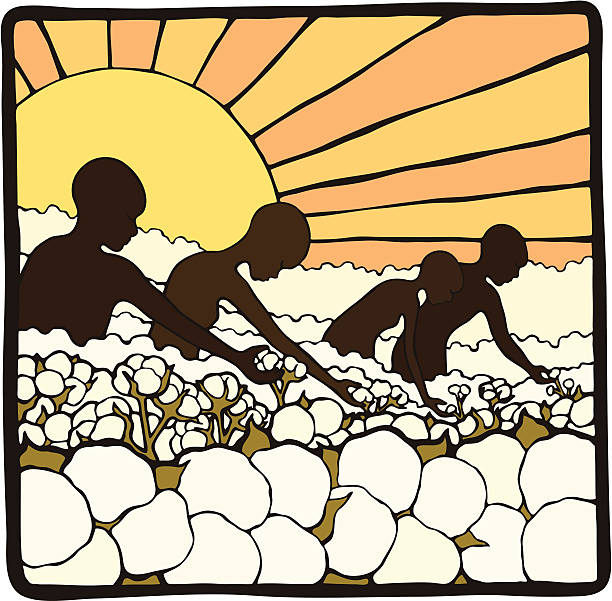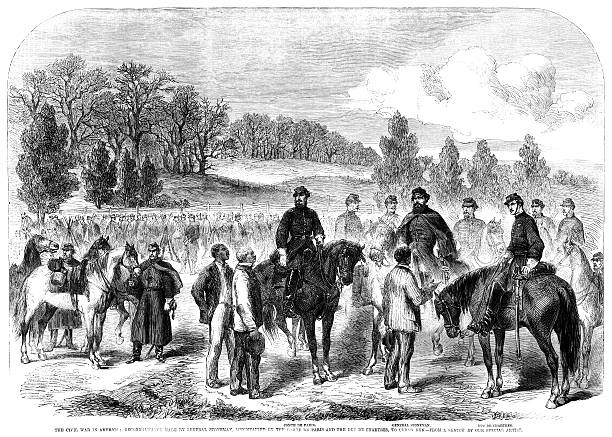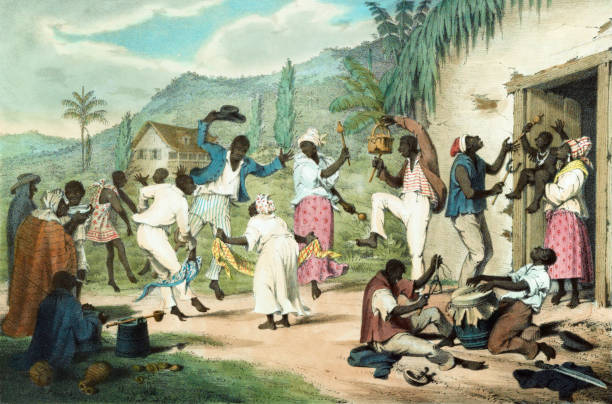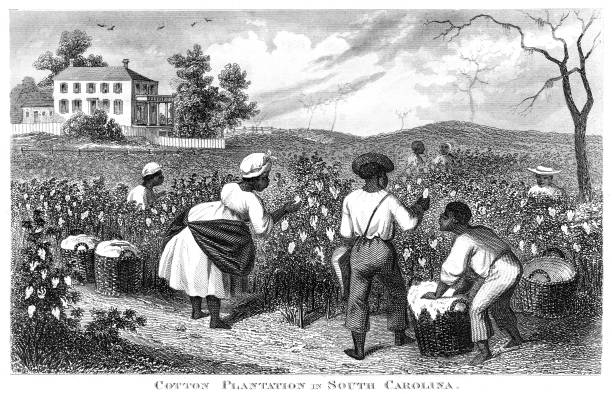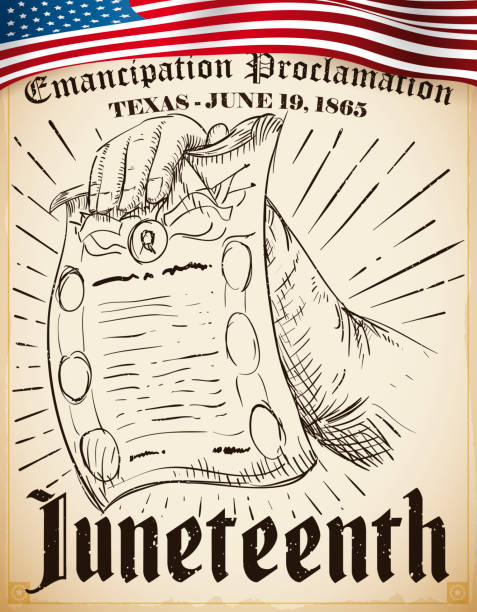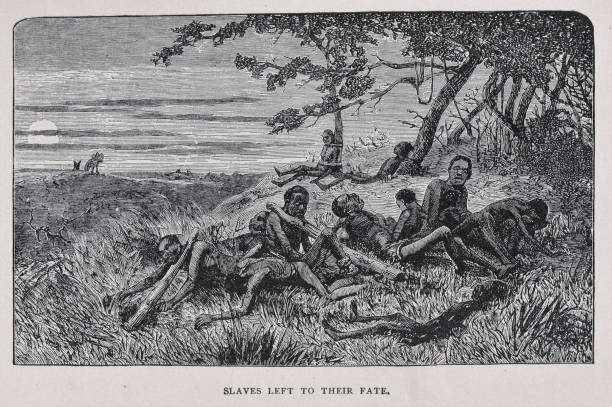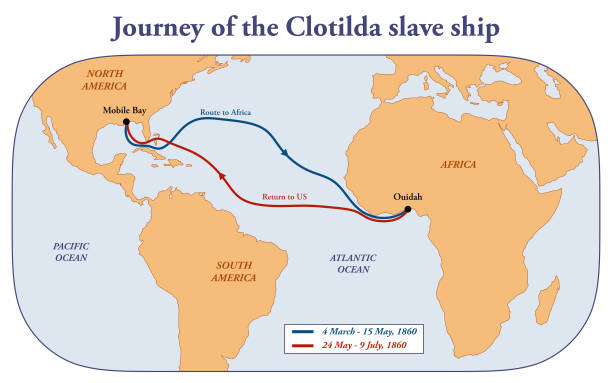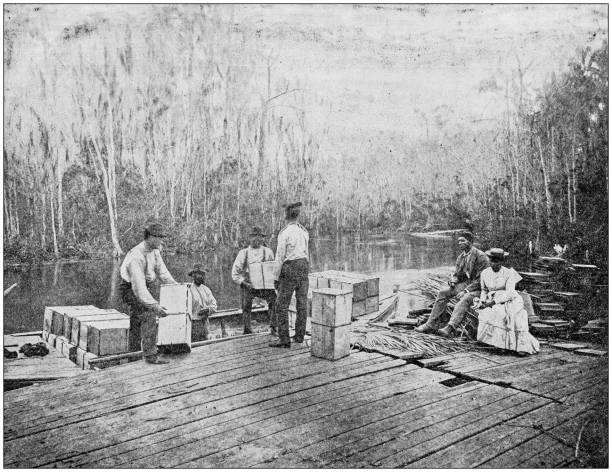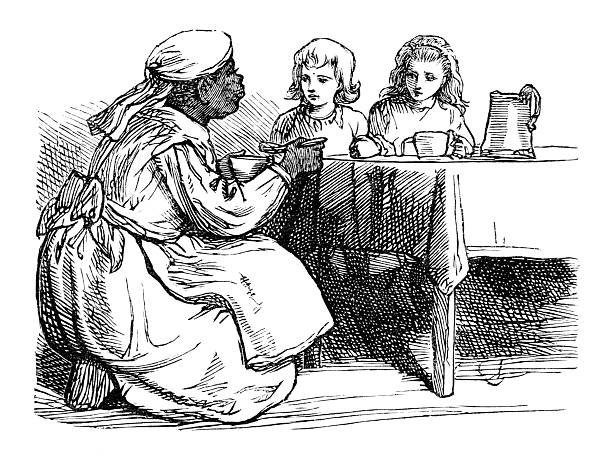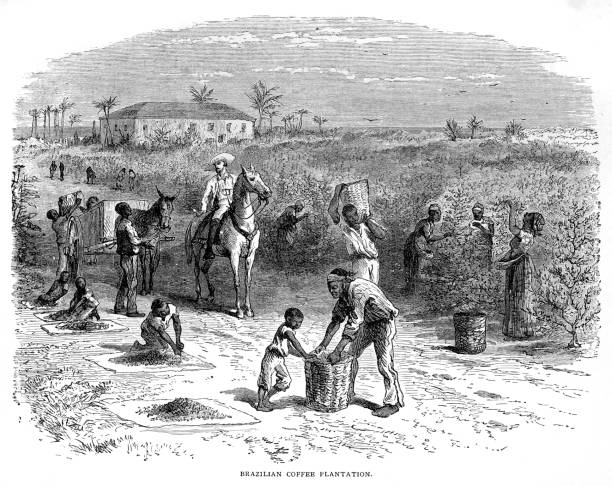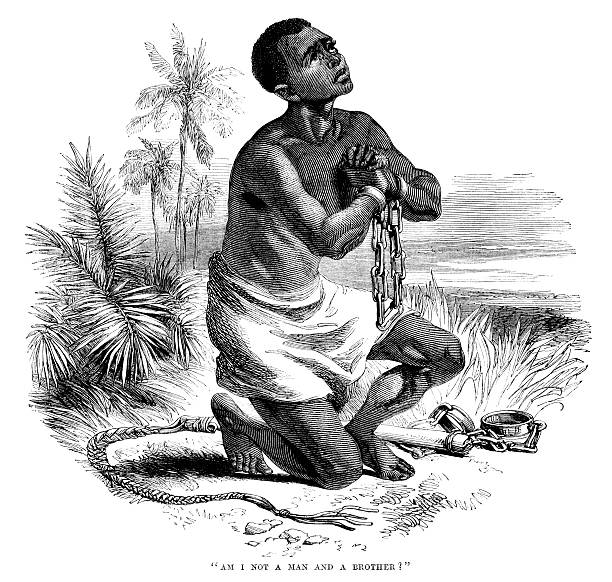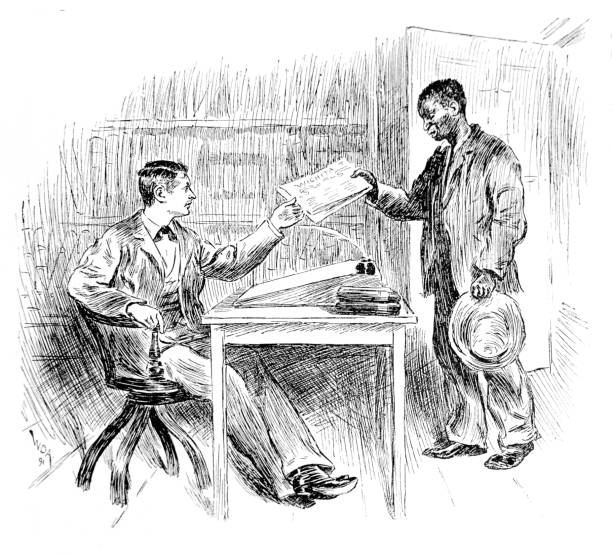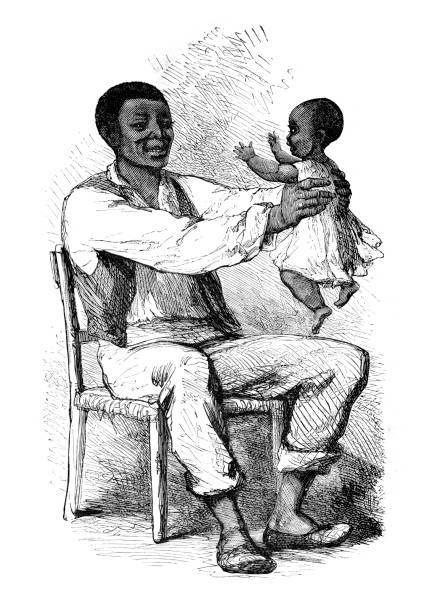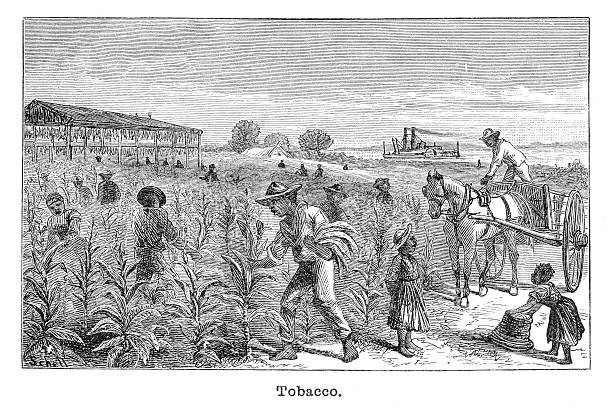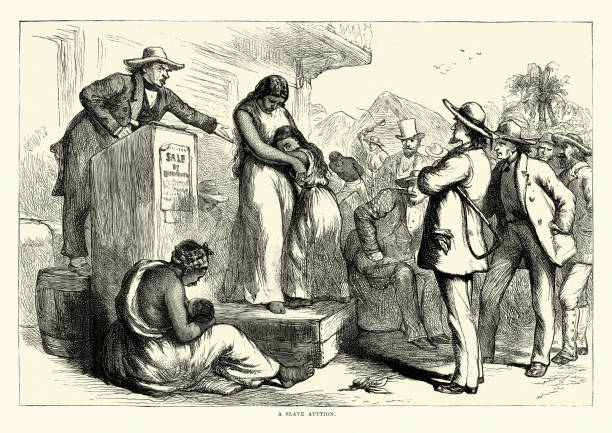
American Slavery stock illustrations
Browse 2,400+ american slavery stock illustrations and vector graphics available royalty-free, or search for african american slavery to find more great stock images and vector art.

Vintage engraving of a Mother and daughter sold at Slave Auction, Southern USA, 19th Century
Vintage engraving of Workers picking cotton, Louisiana, 19th Century
Vintage illustration represents the emancipation of Southern slaves at the end of the American Civil War. This image contrasts the life of a slave and that of a free man's life.
African slaves arrive in Rhode Island in Colonial America. Illustration published in The New Eclectic History of the United States by M. E. Thalheimer (American Book Company; New York, Cincinnati, and Chicago) in 1881 and 1890. Copyright expired; artwork is in Public Domain.
Vintage engraving shows a crowd of African men, women, and children who had been rescued by the British navy from a slaving vessel in 1884. Two British sailors from the HMS Undine are seen in the background. Although the slave trade was abolished in many countries during the 19th century, slave trading continued in other countries.
Vintage engraving of African Americans harvesting and packing of cotton in Louisiana. Ferdinand Hirts Geographische Bildertafeln,1886.
Slaves walking with garden tools. Racist illustration from 19th Century, showing captives enjoying their life as opposed to true reality of life on the Plantation.
Slavery in America - Sugar Cane Plantation
Vintage illustration shows a group of four black men, possibly freedmen, ambushed by a posse of six armed whites in a cornfield. The Fugitive Slave Act passed by Congress in September 1850 allowed slave-hunters to seize alleged fugitive slaves without due process of law and prohibited anyone from aiding escaped fugitives or obstructing their recovery. The law threatened the safety of all blacks, slave and free, and forced many Northerners to become more defiant in their support of fugitives.
African Americans harvesting cotton. Illustration originally published in Hesse-Wartegg's "Nord Amerika", swedish edition published in 1880. The image is currently in public domain.
Vintage engraving of Hunting a runaway slave, Southern USA, 19th Century. African american man running through long grass chased by men on horseback with dogs
Vintage engraving of A fight interrupted, Georgia, USA. 1882
Vintage portrait of Frederick Douglass (1818-1895), an American social reformer, abolitionist, orator, writer, and statesman. After escaping from slavery in Maryland in 1838, he became a national leader of the abolitionist movement in Massachusetts and New York.
Vintage engraving of Harriet Tubman (1822-1913), an American abolitionist and political activist. Born into slavery, Tubman escaped and later made some 13 missions to rescue approximately 70 slaves using the network of anti-slavery activists and safe houses known as the Underground Railroad. During the American Civil War, she served as an armed scout and spy for the Union Army. In her later years, Tubman was an activist in the movement for women's suffrage.
Antique photograph of 19th century slaves working in a sugar plantation in Lousiana (Usa)
Vintage illustration features portraits of African-American heroes, including Blanche Kelso Bruce, Frederick Douglass, and Hiram Rhoades Revels, surrounded by scenes of African-American life in the mid 1800s and portraits of Abraham Lincoln, James A. Garfield, and Ulysses S. Grant.
Vintage illustration features the Great Fire of New York in 1776. Less than a week before the fire, the British army marched into New York unopposed. Several buildings were engulfed in flames, citizens were beaten by Redcoats, and African slaves started looting. Historians have never been able to determine who started the Great Fire but one theory states that the rebel American patriots started the fire in order to counter the British occupation and prevent them from using New York as a base of operations.
Vintage illustration features The Underground Railroad, a network of secret routes and safe houses established in the United States during the early to mid-19th century, and used by enslaved African-Americans to escape into free states and Canada. The painting shows a large family of black slaves, fugitives from the south, being sheltered from the snow by Levi Coffin and his wife. The Quaker family helping the slaves details two common stereotypes about the underground railroad: helpless slaves and their heroic Quaker saviors.
illustration was published in 1881 “Popular history of the united states" scan by Ivan Burmistrov
The diorama represents African-American life in freedom and in slavery. Vintage engraving circa late 19th century. Digital restoration by Pictore.
From First Century of National Existence; The United States - 1873
Vintage portrait features the first African-American Senators and Representatives in the 41st and 42nd Congress of the United States, 1869-1873.
Vintage engraving of workers picking cotton on a southern plantation, New Orleans 19th Century
Vintage engraving features the continued racial violence against former African-American slaves after the end of the American Civil War.
Engraving From 1868 Featuring The American Writer And Former Slave, Frederick Douglass. Douglass Lived From 1818 Until 1895.
An West Indian lady being introduced to a group of Europeans. An illustration of a children's nurse from "The Babes in the Basket or Daph and Her Charge" by C. E. Bowen, publ. T Nelson & Son, 1873. The story relates how she was rescuing the children in her charge from an uprising on the island and smuggling them away on a Yankee ship.
Vintage engraving of a Plantation Master with whip at the Slave market, while a man begs not to be separated from his son and daughter. From the anti slavery story De planter brunel en zijne slaven asa en neno, by Henderikus Christophorus Schetsberg, Netherlands. 1858.
Vintage engraving of a African American man and slave owner, 19th Century
Vintage engraving of African americans harvisting crop in a cotton field, cotton in a field, on a cotton plantation, 19th Century
Steel engraving from 1881 with great details
Engraving of Scene in the Military Market at Beaufort, South Carolina, 1861 Civil War Engraving from "Famous Leaders and Battle Scenes of the Civil War," Published in 1864. Original edition from my own archives. Copyright has expired on this artwork. Digitally restored.
illustration was published in 1881 “Popular history of the united states" scan by Ivan Burmistrov
Vintage illustration features the Battle of Pea Ridge, an American Civil War battle fought from May 7 to 8, 1862 between the U.S. Army of the Southwest and the Confederate Army of the West. The battle was fought near Leetown, northeast of Fayetteville, Arkansas and resulted in a Union victory.
Engraving of the Sixth Regiment of Massachusetts Volunteers leaving Jersey City Railroad Depot to defend Washington, DC, April 18th, 1861 from "Famous Leaders and Battle Scenes of the Civil War," Published in 1864. Copyright has expired on this artwork. Digitally restored.
Antique black and white photograph of people from islands in the Caribbean and in the Pacific Ocean; Cuba, Hawaii, Philippines and others: Sugar cane field, Cuba
Vintage engraving features Kentucky Senator Henry Clay speaking about the Compromise of 1850 in the Old United States Senate Chamber. The Compromise of 1850 consists of five laws passed in that dealt with the issue of slavery and territorial expansion.
Engraving of the Morning Mustering of the Contrabands at Fortress Monroe, on their way to Their Day's Work, 1861 from "Famous Leaders and Battle Scenes of the Civil War," Published in 1864. Copyright has expired on this artwork. Digitally restored.
Men and Women laborers picking cotton. African men and women illustrated among vast fields (or a plantation) of cotton working as slaves. A large sun beats hot rays of light down in the background.
A reconnaissance party, including the Comte de Paris, General George Stoneman Jr. and the Duc de Chartres, at Cedar Run, interviewing some escaped slaves to gain intelligence. The Comte and the Duc were Orleanist princes. The battle, known as the Battle of Cedar Mountain, or Slaughter’s Mountain, took place on 9th August 1862. From an edition of “The Illustrated London News” dated Saturday 10th April, 1862; no 1140.
Vintage illustration features African Trinidadians playing music and dancing.
Facts for Farmers - Materials fror Land-owners about Domestic Animals, Gardens and Vineyards, Edited by Solon Robinson in Two Volumens New York, A.J.Johnson 1873
Scroll with U.S.A. flag and drawing of a hand holding the Emancipation Proclamation, promoting Juneteenth and commemorating the event in 19th June, 1865 in Texas.
When slaves were in bad physical condition, mostly due to ill treatment by slave traders, they were left behind to die in 1800s Africa. Illustration published 1891. Source: Original edition is from my own archives. Copyright has expired and is in Public Domain.
Map with the journey of the Clotilda, the last American slave ship
An illustration of a West Indian children's nurse from "The Babes in the Basket or Daph and Her Charge" by C. E. Bowen, publ. T Nelson & Son, 1873. The story relates how she was rescuing the children in her charge from an uprising on the island and smuggling them away on a Yankee ship. Here she is giving the children a meal.
Harper's School Geography, New York, Harper's and Brothers, 1881.
"Am I not a man and a brother?" An iconic anti-slavery illustration based upon the medallion produced by Josiah Wedgwood in 1787 as an important contribution to the movement for the Abolition of Slavery. (From "The Family Friend" published by S.W. Partridge & Co., London, 1875.) The abhorrent business of trading in slaves was outlawed in Britain in 1807.
One man holds the "Wichita" Newspaper with another man sat down, from the story "The Sheriff and his partner" from the historic pre-1900 book "The English Illustrated Magazine 1891-1892". Imprint and cover as release.
"Vintage engraving of 'Uncle Tom' the character form Harriet Beecher Stowe's novel Uncle Tom's Cabin or, Life Among the Lowly published in 1852, which had an effect on attitudes toward African Americans and slavery in the United States."

